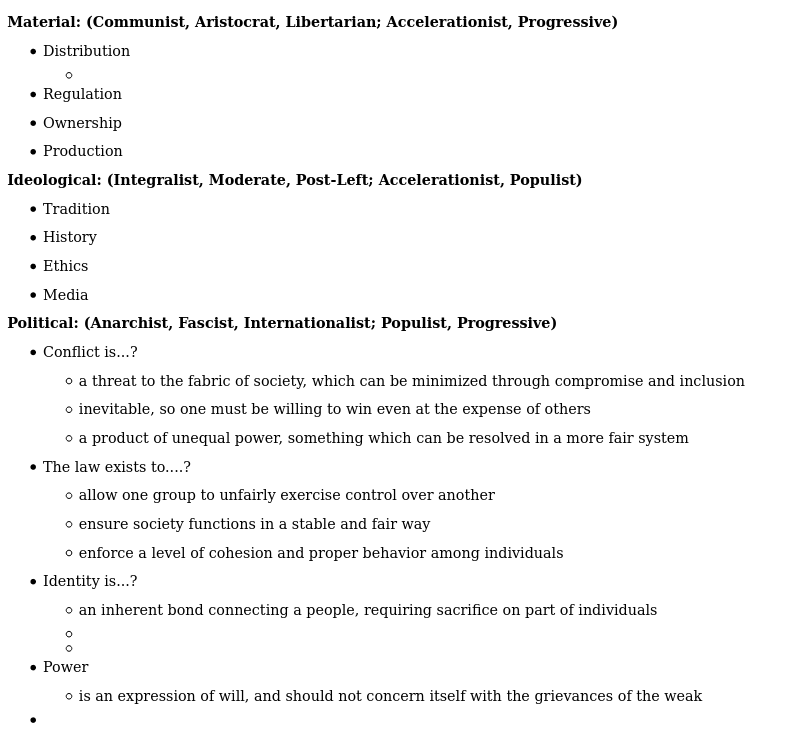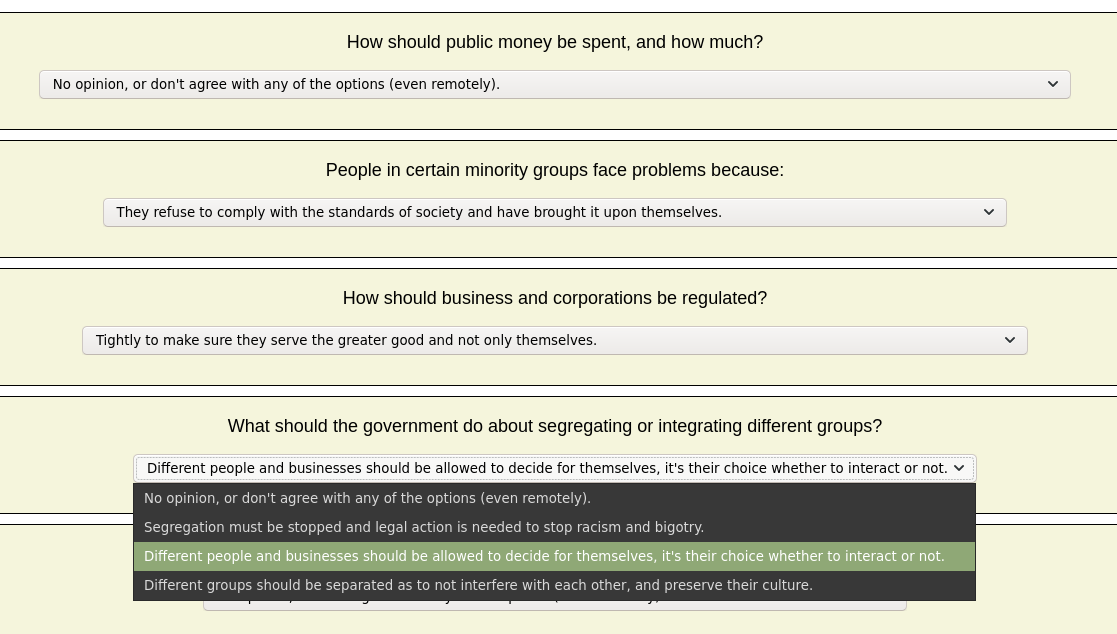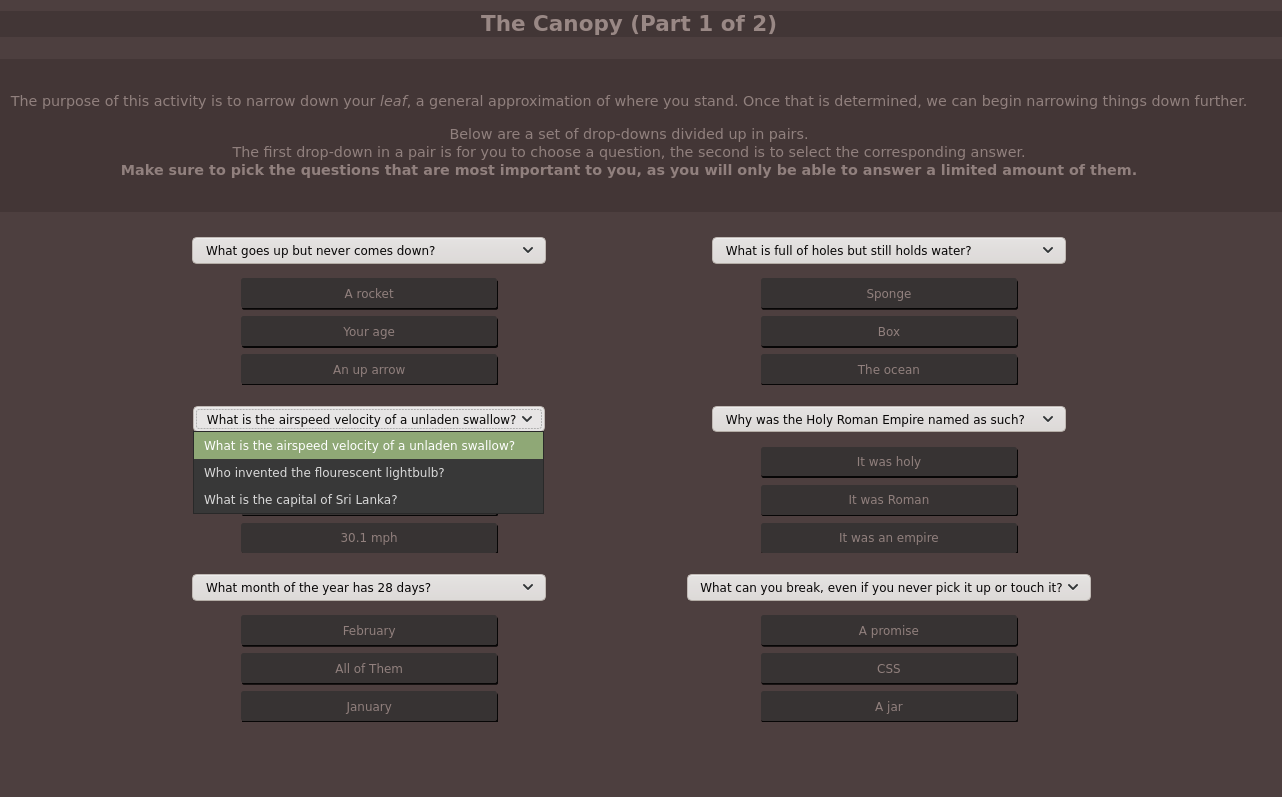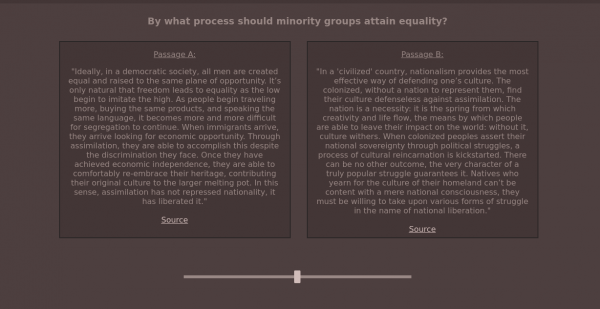The following is part of a larger series discussing the ongoing development of PoliTree, an attempted political-compass killer which has been way too long in the making. To find out more, visit the introduction.
Strap in, because this is probably the biggest update in almost a year. Right off the bat, here’s a minor status update:
- We are now up to 25 out of 32 completed sets of filter questions.
- I’m considering renaming the test to the BrownTest so it’s easier to remember and there’s less semantics about whether or not “dichotomy” is accurate. This is named because… the site is brown.
- I’ve been having conversations with the creator of the Three Telos Model. Despite the common triangular-ness, we had quite a few (constructive) disagreements in our approaches on multiple fronts. Having that sort of differing perspective should prove quite useful in reminding me of what I’m looking to accomplish here.
- Might look into adding a glossary to the wiki given how much I’m having to use neologisms to describe the function of this model.
The big one though is that I finally moved onto working on the canopy questions. And yes, the whole thing has been entirely reworked from the ground up. Here were the major issues with the previous canopy design, stuff I’ve been meaning do deal with for like over a year by now:
- The questions were far too direct, expecting the end-user to comprehend and process an incredibly abstract concept. Anyone who is capable of this probably already knows where they fall.
- Both activities required a paragraph or two of instructions which based themselves on a set of jargon that once again, wasn’t something you could just expect the user to grasp. It’s very likely their eyes would just gloss over the details.
One of the ideas I had at first was to replace the old two-tiered drag-and-drop instructions with a sort of grammatical approach, so what the user needed to do was more self-evident. Apart from the hell that was getting the CSS for it to work, the bigger issue was that there was just no real way to phrase the sentence in any way which made sense. The idea was quickly abandoned.

I wasn’t sure how to else to proceed until I saw a Discord comment which just sort of kick-started a chain of eureka moments for me:

Taking this into account, I broke up all the Focuses into these sort of more specific topics to see what I’d get out of it.

As a reminder, the way the canopy presently works is that its divided into two sections, one for the Focus and one for the Approach. In theory, the Focus questions should determine what is most important to you, while the Approach determines what you plan to do about it.
Yet it occurred to be that I could simplify things down by combining both sections into one, each element being represented by one aspect of the same activity.
How exactly to go about this was unclear, but given the pains I was having attempting to fix up the CSS for the “sentence activity”, I decided to see what parts of the discarded filter questions format I could reuse.
It was around this time I was talking to the Three Telos guy, and I decided to take a look at an online test someone made based on his model. Overall it was about what I expected, but for some reason the way its questions were structured with the dropdowns gave me an idea.

Rather than just let the user select the answer via drop-down, I’d also force them to select the question via drop-down.
Let’s assume that we have one of these drop-down menus. In this drop-down there’s three questions which the user can select. Each one of these three options represents a topic within a given Focus. So this drop-down will contain a question on Tradition, a question on Distribution, and a question on Conflict.
Doing the math, we will end up with 24 drop-downs needed for the user to get to answer every question. But what happens when we give the user only say, six drop-downs they can answer? They pick the questions that are the most important to them. Thus we have dealt with the matter of Focus.
From there, we’ll have the multiple choice of the answers vary with whichever question is selected. Each of these options still follow a common pattern in that they expess either a reactionary, radical, or liberal perspective on the issue. And there’s the matter of the Approach handled.
I’ve slapped together a bunch of generic questions to show you the template of what this will look like:

Blogger and software engineer. I write on tech, politics, and theology.

